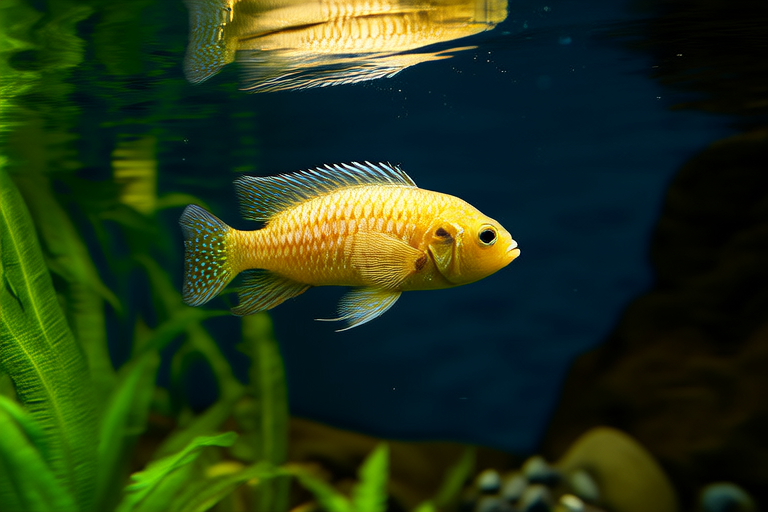5 Secrets Your Goldfish Wishes You Knew
Welcome, dear human! If you’re reading this, it means you’ve taken the first step towards becoming a better goldfish owner. Let me share with you some secrets that will help you understand your little aquatic friend better. These insights will not only make your goldfish happier but also healthier. So, let’s dive into the world of goldfish care!
Secret #1: The Truth About Goldfish Memory
One of the most common myths about goldfish is that they have a three-second memory. This couldn’t be further from the truth! While goldfish may not remember events for months on end like humans, they can indeed recall things for several weeks. They can recognize their owners, learn tricks, and even remember the times when they were fed.
Scientifically speaking, goldfish possess a well-developed brain structure known as the telencephalon, which is involved in learning and memory. This part of their brain allows them to form associations and retain information for quite some time. For example, if you consistently feed your goldfish at the same time every day, they’ll start anticipating mealtime and swim over to you eagerly.
To foster a positive relationship with your goldfish, try training them with treats like freeze-dried bloodworms or pellets. Not only will this strengthen the bond between you, but it will also stimulate their cognitive abilities. Remember, mental stimulation is just as important as physical care for your pet.
Secret #2: Optimal Tank Conditions for Goldfish
The environment in which your goldfish lives plays a crucial role in their overall health and happiness. Contrary to popular belief, goldfish require more space than many people realize. A small bowl or tank isn’t suitable for these active swimmers. In fact, overcrowding can lead to stress and disease.
A general rule of thumb is to provide at least 20 gallons of water per goldfish. This ensures there’s enough room for swimming and prevents the buildup of toxins such as ammonia and nitrite. Proper filtration is essential too; it helps maintain clean water by removing debris and harmful substances.
Temperature regulation is another vital aspect of tank maintenance. Goldfish thrive in cooler waters ranging from 68°F to 74°F (20°C to 23°C). Avoid exposing them to sudden temperature changes, as this can cause shock and illness. Additionally, ensure that the pH level remains stable within the range of 6.5 to 8.0.
To keep your goldfish comfortable, perform regular water changes – about 10-20% weekly – and monitor parameters using test kits. By doing so, you’ll create an ideal habitat where your fish can flourish.
Secret #3: Feeding Your Goldfish Right
Goldfish are omnivores with diverse dietary requirements. Their diet should include high-quality flake food, pellets, and occasional treats like vegetables, tubifex worms, or brine shrimp. However, feeding them too much or too often can result in obesity and digestive issues.
It’s best to offer small portions twice daily rather than one large meal. Pay attention to how quickly your goldfish consumes food; if uneaten pieces remain after five minutes, reduce the serving size next time. Overfeeding not only harms your fish but also pollutes the aquarium by increasing waste production.
Variety is key when it comes to nutrition. Incorporating different types of foods provides essential vitamins and minerals necessary for growth and immunity. Consider adding blanched zucchini slices or spinach leaves once a week to supplement their regular diet.
Secret #4: Signs of Goldfish Happiness and Stress
Observing your goldfish closely can give you valuable insights into their emotional state. Happy fish exhibit vibrant colors, active swimming patterns, and interest in food. On the other hand, stressed or sick fish might show lethargy, loss of appetite, pale coloration, rapid breathing, or unusual behavior such as rubbing against objects.
One way to promote happiness among your goldfish is by providing hiding spots and decorations that mimic natural environments. Plants, caves, and driftwood offer refuge during resting periods while enhancing aesthetics. Moreover, maintaining consistent lighting schedules mimics day-night cycles found in nature, helping regulate circadian rhythms.
If you notice any signs of distress, take immediate action. Check water quality parameters, adjust feeding routines, and consult a veterinarian specializing in aquatic animals if necessary. Early intervention can prevent serious health complications down the line.
